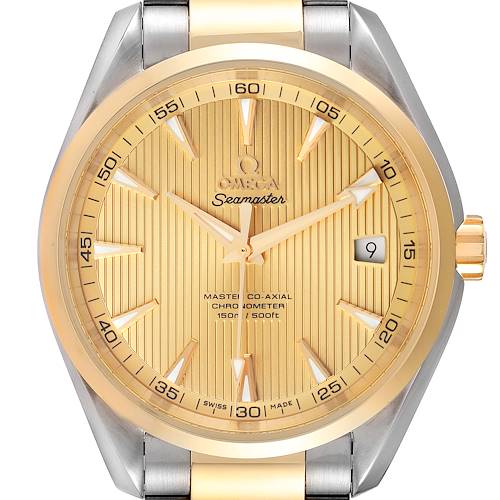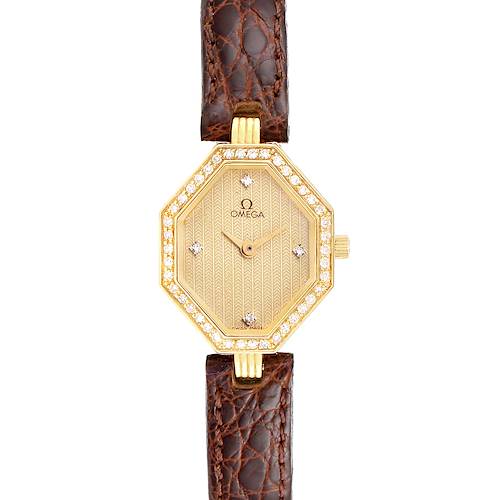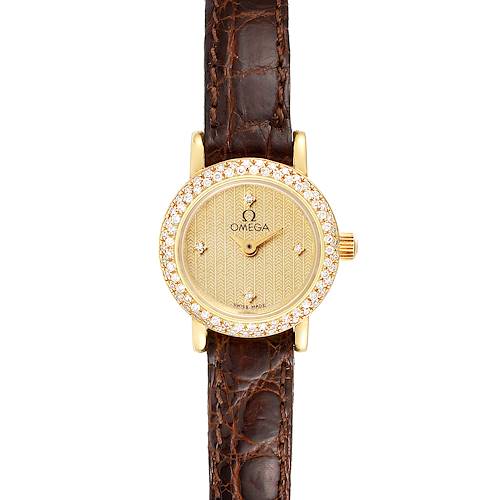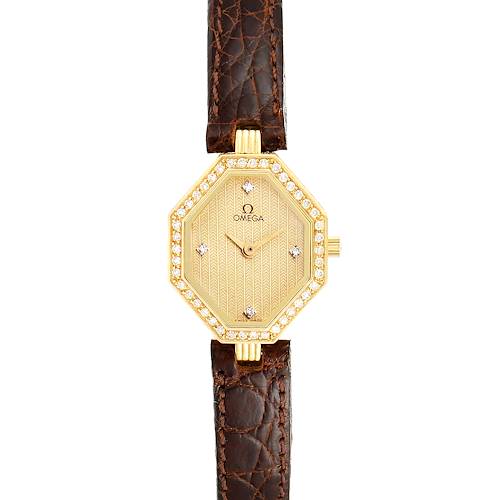- CALL US (404) 814-1814
- LIVE SUPPORT
- EMAIL US
-
WISHLIST (0)
-
CART(0)
champagne Omega Watch Collection
44 MATCHES FOUND
IN STOCK
SwissWatchExpo ARCHIVE - RECENTLY SOLD
Sold

Omega Seamaster Aqua Terra Steel Yellow Gold Watch 231.20.39.21.08.001 Box Card
Stock Number: 63252
Join Waitlist
Sold

Omega Renaissance 1894 18k Rose Gold Limited Edition Mens Watch 5950.30.03
Stock Number: 65615
Join Waitlist
Sold

Omega Seamaster Aqua Terra Steel Yellow Gold Watch 231.20.42.21.08.001 Box Card
Stock Number: 65514
Join Waitlist
Sold

Omega Seamaster Aqua Terra Steel Yellow Gold Watch 231.20.42.21.08.001 Box Card
Stock Number: 62376
Join Waitlist
Sold

Omega Speedmaster Steel 18K Yellow Gold Automatic Watch 3310.10.00
Stock Number: 55273
Join Waitlist
Sold

Omega Seamaster Aqua Terra Steel Yellow Gold Watch 231.20.42.21.08.001 Unworn
Stock Number: 46776
Join Waitlist
Sold

Omega Seamaster Aqua Terra Steel Yellow Gold Watch 231.20.42.21.08.001 Unworn
Stock Number: 39839
Join Waitlist
Sold

Omega Speedmaster Steel Yellow Gold Automatic Mens Watch 3310.10.00 Card
Stock Number: 42912
Join Waitlist
Sold

Omega Seamaster Aqua Terra Steel Yellow Gold Watch 231.20.42.21.08.001 Unworn
Stock Number: 42849
Join Waitlist
Sold

Omega Constellation Steel Yellow Gold Diamond Watch 123.20.27.60.58.001 Box Card
Stock Number: 36717
Join Waitlist
Sold

Omega DeVille Mini Yellow Gold Diamond Cocktail Ladies Watch 1450 Unworn
Stock Number: 28394
Join Waitlist
Sold

Omega Speedmaster Steel 18K Yellow Gold Automatic Watch 3310.10.00
Stock Number: 33200
Join Waitlist
Sold

Omega Constellation Steel 18K Yellow Gold Mens Watch 1212.10.00
Stock Number: 31264
Join Waitlist
Sold

Omega Constellation Steel Yellow Gold Diamond Watch 123.20.24.60.58.001 Unworn
Stock Number: 32847
Join Waitlist
Sold

Omega Constellation Steel Yellow Gold Diamond Watch 123.20.27.60.58.002
Stock Number: 32617
Join Waitlist
Sold

Omega DeVille Mini Yellow Gold Diamond Cocktail Ladies Watch 1450
Stock Number: 28390
Join Waitlist
Sold

Omega Speedmaster Steel 18K Yellow Gold Automatic Watch 3310.10.00
Stock Number: 30333
Join Waitlist
Sold

Omega DeVille Mini Yellow Gold Diamond Cocktail Ladies Watch 1450 Unworn
Stock Number: 28395
Join Waitlist
Sold

Omega DeVille Mini Yellow Gold Diamond Cocktail Ladies Watch 1450 Unworn
Stock Number: 28393
Join Waitlist
Sold

Omega DeVille Mini Yellow Gold Diamond Cocktail Ladies Watch 1450 Unworn
Stock Number: 28397
Join Waitlist
Sold

Omega DeVille Mini Yellow Gold Diamond Cocktail Ladies Watch 1450 Unworn
Stock Number: 28398
Join Waitlist
Sold

Omega DeVille Mini Yellow Gold Diamond Cocktail Ladies Watch 1450 Unworn
Stock Number: 28391
Join Waitlist
Sold

Omega Speedmaster Steel 18K Yellow Gold Automatic Watch 3310.10.00
Stock Number: 29692
Join Waitlist
Sold

Omega DeVille Mini Yellow Gold Diamond Cocktail Ladies Watch 1450
Stock Number: 28390A
Join Waitlist
Sold

Omega Speedmaster Steel 18K Yellow Gold Automatic Watch 3310.10
Stock Number: 26960
Join Waitlist
Sold

Omega Constellation Perpetual Calendar Steel Yellow Gold Watch 1211.10.00
Stock Number: 23753
Join Waitlist
Sold

Omega Constellation My Choice Mini Ladies Diamond Watch 1267.15.00
Stock Number: 15862
Join Waitlist
Sold

Omega Constellation 31 Co-Axial Diamond Ladies Watch 123.25.31.20.58.001
Stock Number: 15062
Join Waitlist
Sold

Omega Speedmaster Steel 18K Yellow Gold Automatic Watch 3310.10
Stock Number: 10514
Join Waitlist
Sold

Omega Speedmaster Apollo Moon Vintage Yellow Gold Watch 145022
Stock Number: 7617
Join Waitlist
Sold

Omega Constellation Mini Steel 18K Yellow Gold Diamond 1267.15.00 Watch
Stock Number: 4356
Join Waitlist














